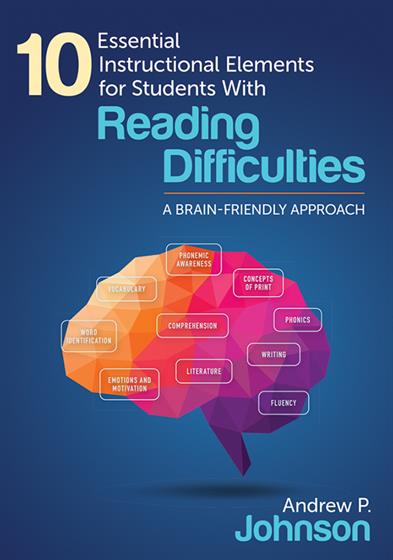Introduction
Context
Code First or Meaning First
Tools in Your Teaching Toolbox
Audience
Section I. Understanding the Reading Process
Chapter 1. Creating Meaning With Print: The Neurocognitive Model
Understanding Reading
Reading: A Neurological Perspective
The Neurocognitive Process
Last Word
Chapter 2. Eye Movement and Neural Pathways
Eye Movement During Reading
Understanding Our Learning Organ
Last Word
Chapter 3. Understanding Reading From a Cognitive Perspective
The Difference Between Brain and Mind
The Information Processing Model
The Two-Way Flow of Information
Last Word
Section II. Diagnosing Reading Problems, Documenting Progress, and Planning Instruction
Chapter 4. Diagnosis and Documentation
Diagnosing the Problem
Graded Word Lists
Graded Reading Passages
Assessing Comprehension
Putting It Together
Last Word
Chapter 5. Reading Lessons
SRE Lesson
Guided Reading Lesson
Shared Reading Lesson
Last Word
Section III. 10 Instructional Elements
Chapter 6. 10 Elements of Reading Instruction
No Magical Programs
Comprehensive Reading Instruction
Teaching Reading With the Brain in Mind
Last Word
Chapter 7. Emergent Literacy: Concepts of Print and Phonemic Awareness
Approaches to Early Literacy Instruction
Creating the Conditions for Early Literacy Learning
Concepts of Print
Phonemic-Phonics Hybrid Activities
Last Word
Chapter 8. Emotions and Motivation
Emotions
The Value-Expectancy Theory of Motivation
Some Basic Strategies
Last Word
Chapter 9. Literature and Instructional Approaches
Strategies for Promoting Voluntary Reading
Instructional Approaches
Last Word
Chapter 10. Phonics
Fawnix
14 Strategies
Last Word
Appendix: Phonics Checklist
Chapter 11. Strategies for Developing Word Identification Skills
Terms and Concepts Related to Word Identification
Context Clues: The Semantic Cueing System
Word Order and Grammar: The Syntactic-Cueing System
Word Parts
Morphemic Analysis
Sight Words
Last Word
Chapter 12. Fluency
Reading Fluency
Neural Pathways and Networks
Strategies for Enhancing Reading Fluency
Avoid Round-Robin Reading
Last Word
Chapter 13. Comprehension of Narrative Text
Comprehension Basics
Teaching Tips
Activities Organized by Cognitive Process
Last Word
Chapter 14. Comprehension of Expository Text
Expository Text
Teacher Pre-Reading Strategies
Study-Skill Strategies
Pedagogical Strategies to Develop Cognitive Processes Related to Comprehension
Last Word
Chapter 15. Vocabulary
Attending to Vocabulary
General Principles for Developing Students’ Vocabulary
Strategies for Developing Students’ Vocabulary
Visual Displays and Graphic Organizers
Last Word About Words
Chapter 16. Writing
The Why and How of Writing
Specific Strategies
Last Word
Epilogue


